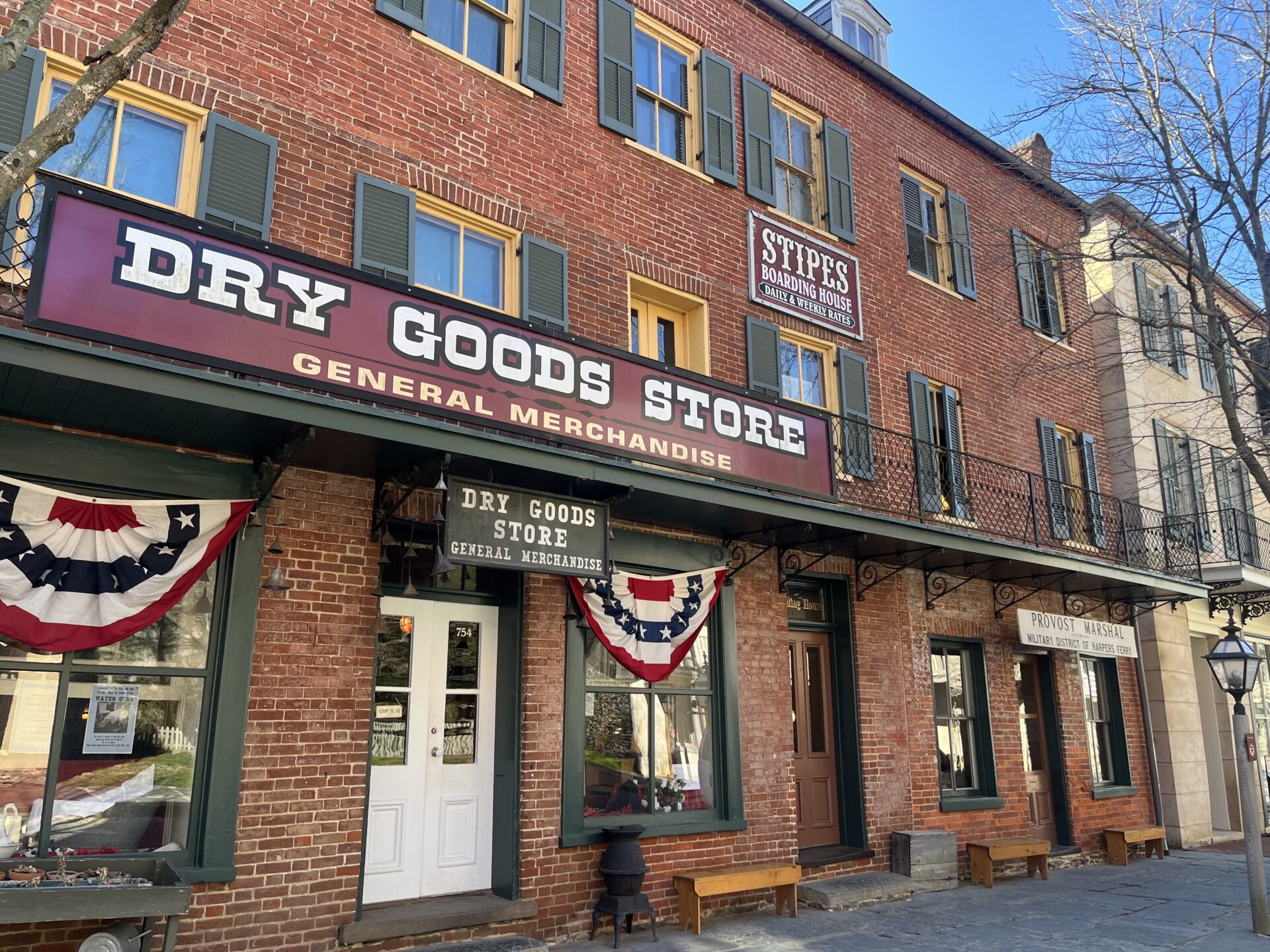Tourists from around the world visit Harpers Ferry each year to immerse themselves in U.S. history. But four years ago, things were a lot quieter downtown with the COVID-19 pandemic spreading nationwide.
Between 2019 and 2020, visits to the park fell by more than 20 percent. Guided tours and bookshop sales fell, too.
“During the initial part of the pandemic, they said that being outside was actually a bad thing,” said Scot Faulkner, president of the Friends of Harpers Ferry National Historical Park. His group serves as a liaison between local residents and the national park.
“They literally blocked access to the trails. They blocked access to these open fields. They even hauled logs to block the parking areas,” he said.
“We experienced a decrease in visitation as travel restrictions and concerns about virus transmission led to reduced recreation activities and some closures,” Kristen Maxfield, an interpretation and education program manager at the park, wrote in an email to West Virginia Public Broadcasting.
Others involved in local tourism, too, said that making decisions during the pandemic was a balancing act.
One attraction that closed with the onset of the pandemic was the Appalachian Trail Conservancy (ATC) headquarters, located in Harpers Ferry.
Photo Credit: Jack Walker/West Virginia Public Broadcasting
The ATC asked thru-hikers to suspend their journeys in 2020. And, from March 2020 to May 2021, the conservancy closed its office in town, according to Dakota Jackson, ATC associate director of visitor services.
According to Jackson, officials worried that a large group of thru-hikers traveling north from Georgia could spread COVID-19 to communities along the trail.
But, ultimately, she said a lot of decision-making happened on the local level, because land managers help oversee portions of the trail.
“It wasn’t ATC closing the trail,” she said. “It really was like an overall decision in response to the pandemic and land managers over the course of 2020.”
In 2022, once most health restrictions were lifted, Jackson said thru-hiker turnout spiked.
But visits to the Harpers Ferry headquarters remain below pre-pandemic levels. Where the center used to bring in 30,000 visitors per year, it barely passed 19,000 in 2023.
Some saw the pandemic shutdown as a way to keep people safe. Others, like hotel owner Karan Townsend, recall its devastating effect on local business.
Townsend said she’s seen pretty consistent tourist turnout since she founded the hotel in 2007. But the pandemic was devastating, because she had to all but close her hotel in March 2020.
Photo Credit: Jack Walker/West Virginia Public Broadcasting
Things changed a few months later, because West Virginia rescinded some of its public health guidelines earlier than nearby states. Townsend said people began returning to her hotel shortly after this.
“Because we were allowed to open, people that were from nearby areas that were still closed down – actually, not just nearby, from all over the world – came here,” she said.
The upheaval Townsend’s business faced was not alone in Harpers Ferry. Faulkner said many tourist-centric businesses had to close up because of decreased visitors and revenue.
But, like Townsend, Faulkner said things improved gradually as the state reopened.
“As West Virginia began to reopen, being able to see the logs pulled away from the trail paths and being able to have the stores, especially the restaurants, reopen in the town … it began to have an uptick in terms of actual economic activity,” he said.
Today, visitors to the national park have bounced back to pre-pandemic levels. They have even surpassed previous heights.
Every year since 2020, the number of visitors to the park has grown. In 2023, more than 400,000 people visited the park.
That marks a growth of more than 100,000 visitors when compared to 2019.
According to Maxfield, the park is now back to its former self, with activities and tour opportunities restored.
“We are delighted to welcome visitors to experience Harpers Ferry National Historical Park for themselves,” she wrote. “There truly is something for people of all ages and interests here.”
Faulkner said that he and residents are also glad to see things back to normal. “We love this park, and [we’re] glad that more and more people are coming.”
